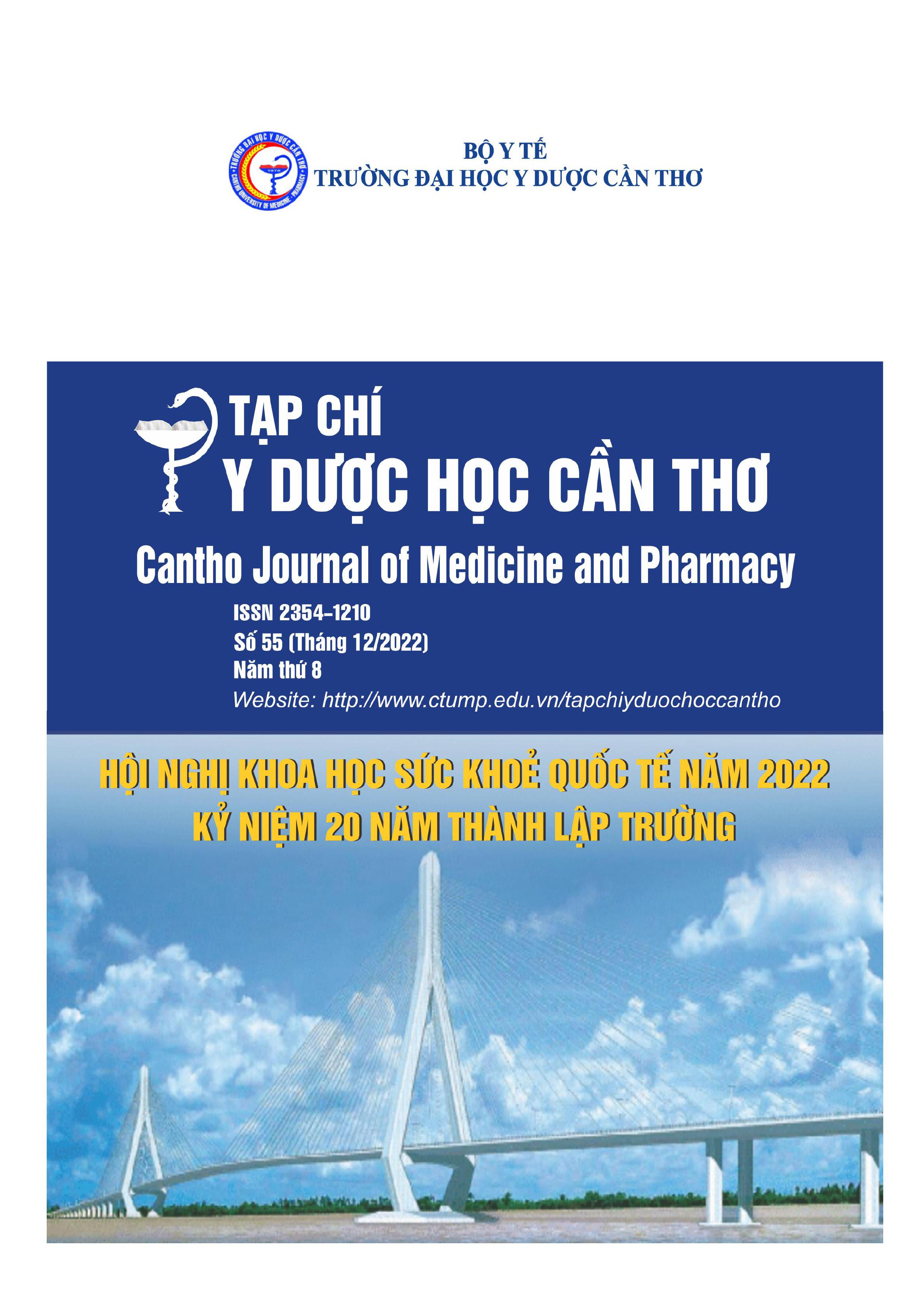EVALUATION OF THE PRACTICE BREATHING EXERCISES OF PATIENTS WITH CHRONIC OBSTRUCTIVE PULMONARY DISEASE
Main Article Content
Abstract
Background: The GOLD 2020 report highlights the prominent role of physiotherapy – rehabilitation including breathing therapy in managing the chronic obstructive pulmonary disease. Objectives: To evaluate the reality of breathing practice in patients with chronic obstructive pulmonary disease. Materials and method: A cross-sectional descriptive study. Evaluation based on a checklist of breathing exercises on 100 chronic obstructive pulmonary disease patients being treated at Tây Nguyên Regional General Hospital and District 11 Hospital. Results: The percentage of age group ≥ 60 accounted for the majority (76%) and up to 74% of patients were male. There were 6 patients who did not participate in active diaphragmatic breathing therapy. 100% of patients participate in pursed-lip breathing therapy. The percentage of patients who followed step 2 correctly in the group of mouth breathing exercises accounted for the highest rate (99%). The percentage of patients who followed steps 1 and 2 correctly in diaphragmatic breathing therapy accounted for the highest rate (80% and 84%). Conclusion: Breathing exercise therapy is one of the respiratory therapies to support respiratory patients, especially patients with chronic obstructive pulmonary disease. However, the reality of practicing breathing exercises on chronic obstructive pulmonary disease patients is still low.
Article Details
Keywords
Chronic obstructive pulmonary disease, breathing exercises, diaphragmatic breathing, pursed-lip breathing
References
2. Phạm Hữu Lư (2021), Đánh giá thực trạng liệu pháp tập thở ở bệnh nhân chấn thương ngực có dẫn lưu màng phổi tại trung tâm tim mạch và lồng ngực- Bệnh viện Hứu nghị Việt Đức năm 2021. Tạp chí Y học Việt Nam, 507 (1), tr.254-258.
3. Nguyễn Thị Bích Ngọc (2019) "Sự thay đổi mức độ khó thở của người bệnh mắc bệnh phổi tắc nghẽn mạn tính sau hướng dẫn tập thở". Y học thực hành, 1098 (5), tr.22-26.
4. Phạm Thị Bích Ngọc, Vũ Thị Là, Lê Văn Cường (2020), Thực trạng thực hành tập thở của người bệnh mắc bệnh phổi tắc nghẽn mạn tính tại Bệnh viện Đa khoa tỉnh Nam Định. Y học thực hành, 1136 (6), tr.70-73.
5. Nguyễn Thị Vân (2016), Nhận xét tình hành thực hiện liệu pháp hô hấp ở bệnh nhân chấn thương, vết thương ngực tại bệnh viện Hữu nghị Việt Đức, Luận văn tốt nghiệp cử nhân y khoa, Luận văn tốt nghiệp cử nhân y khoa, Đại học Y Hà Nội
6. Adeloye D, Chua S, Lee C, Basquill C, Papana A, Theodoratou E, et al. (2015), Global and regional estimates of COPD prevalence: Systematic review and meta-analysi. J Glob Health, 5 (2), tr.1-9.
7. Meek PM, Lareau SC (2003), Critical outcomes in pulmonary rehabilitation: assessment and evaluation of dyspnea and fatigue. J Rehabil Res Dev, 40 (5 Suppl 2), tr.13-24.
8. Ries AL, Bauldoff GS, Carlin BW, Casaburi R, Emery CF, Mahler DA, et al. (2007), Pulmonary Rehabilitation: Joint ACCP/AACVPR Evidence-Based Clinical Practice Guidelines. Chest, 131 (5 Suppl), pp.4-42.
9. Theander K, Jakobsson P, Jorgensen N, Unosson M (2009), Effects of pulmonary rehabilitation on fatigue, functional status and health perceptions in patients with chronic obstructive pulmonary disease: a randomized controlled trial. Clin Rehabil, 23 (2), pp.36-125.
10. Ubolnuar N, Tantisuwat A, Thaveeratitham P, Lertmaharit S, Kruapanich C, Mathiyakom W (2019), Effects of Breathing Exercises in Patients With Chronic Obstructive Pulmonary Disease: Systematic Review and Meta-Analysis. Ann Rehabil Med, 43 (4), pp.509-523.


